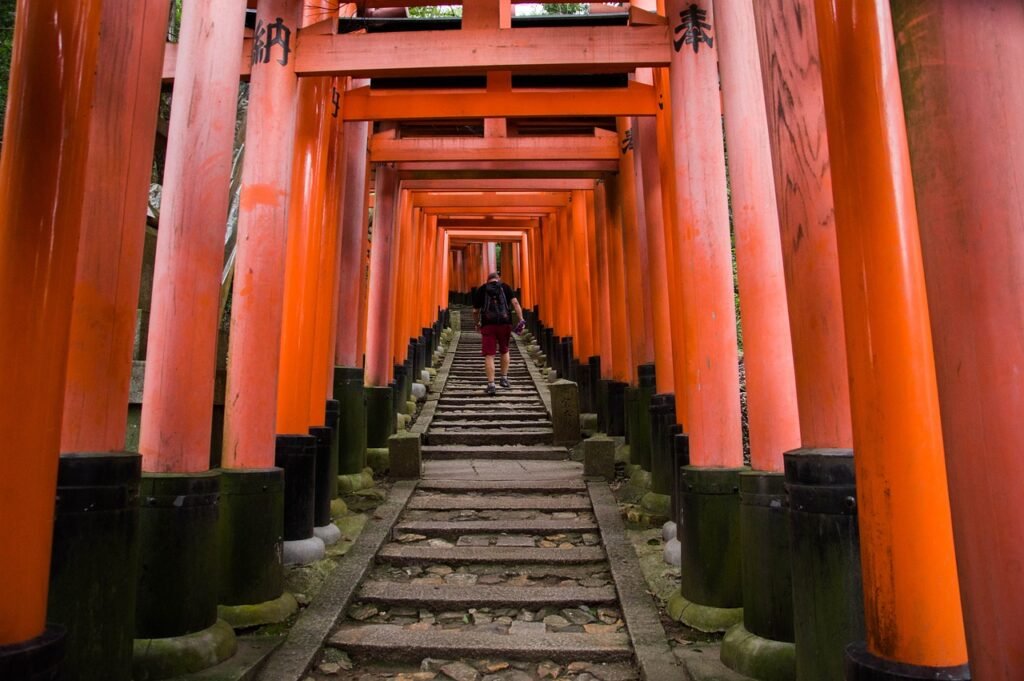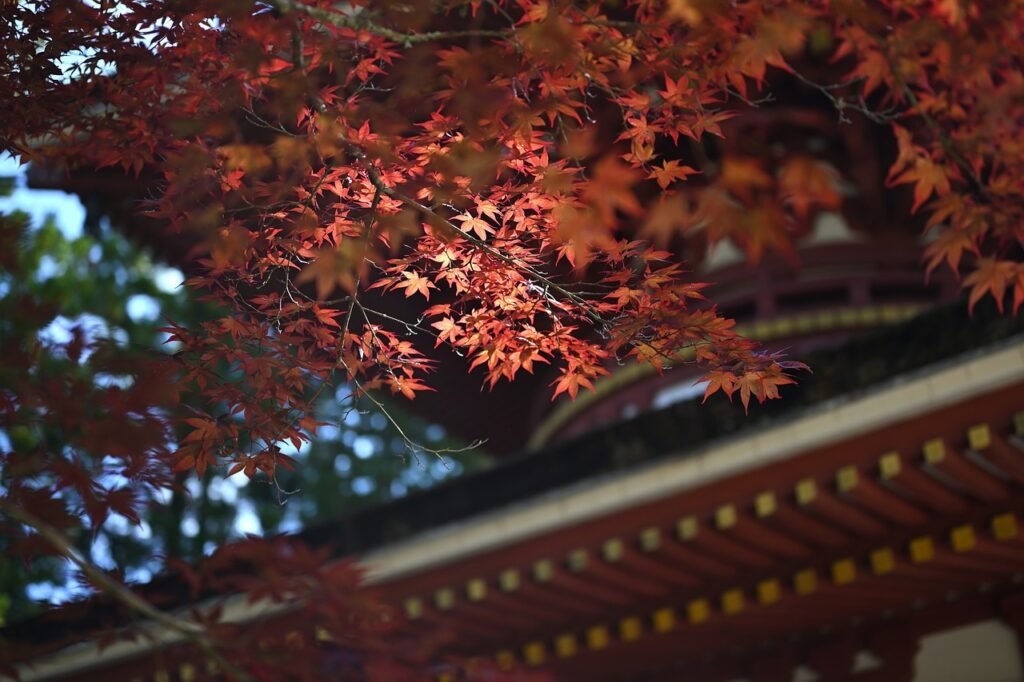Planning a trip to Japan? This enchanting country is a blend of ancient traditions and cutting-edge modernity, offering an experience like no other. To ensure a smooth journey, here’s a detailed checklist covering everything from travel documents to the best time to visit, buying an eSIM, and key considerations before your adventure begins.

🌏🇯🇵 Planning a Trip to Japan?
Save hours of research and enjoy stress-free travel with my ready-made 14-Day Japan Itinerary – based on my trip and packed with detailed daily plans, Google Maps links, local tips, and restaurant recommendations.
🧳 Available now on Etsy → Get the Itinerary Here
Skip the planning. Start the adventure.
1. Travel Documents & Immigration
Passport
Ensure your passport is valid for at least six months beyond your intended stay. Japan is strict about entry requirements, and having a passport that meets these criteria is essential.
Visa Requirements
- Tourist Visa: Many countries, including the USA, Canada, Australia, and EU member states, can enter Japan visa-free for up to 90 days. However, it’s crucial to check the latest requirements based on your nationality. I recommend checking your Ministry of Foreign Affairs or national embassy websites for up-to-date information.
- eVisa: Some travelers may need to apply for an eVisa, especially if you’re planning an extended stay or have special circumstances.
- Proof of Return/Onward Travel: Japanese immigration may ask for proof of a return ticket or onward travel plans.
- You can find further information on the Japanese Immigration Services Agency Website.
Japan Immigration Entry Form
To accelerate the immigration procedure when entering the country, fill out the Online Immigration form before departure using the Visit Japan website.
2. Buying an eSIM card to stay connected
What is an eSIM?
Staying connected while in Japan is essential for navigation, translation, and staying in touch. eSIMs are digital SIM cards that can be downloaded directly to your phone, eliminating the need for a physical card.
They are particularly convenient because they allow you to maintain your regular SIM card and phone number while using the eSIM for data in Japan. For travelers who prefer to plan, purchasing an eSIM online before departure offers the advantage of immediate access upon arrival. Prices vary, but you can typically find plans ranging from 1GB to Unlimited Data, with prices starting around $5 USD.
How to buy an eSIM?
- Before Your Trip: Purchase an eSIM online from providers like Breeze, Airalo, Holafly, or Ubigi. These companies offer eSIMs tailored for Japan with varying data packages.
- Upon Arrival: You can also buy an eSIM at major airports in Japan, but pre-purchasing ensures you’re connected as soon as you land.

Enjoy fast internet with Breeze’s easy-to-use eSIM. Explore affordable unlimited data plans to stay connected in Japan.
Setting Up Your eSIM
- Make sure your phone is eSIM compatible.
- Follow the instructions provided by your eSIM provider to activate the service.
- Test your connection before departure to avoid any issues upon arrival.

3. Weather Information: When to Visit Japan
Japan’s weather varies greatly depending on the time of year and region. Here’s a breakdown to help you choose the best time for your trip.
Spring - Best for cherry blossom viewing
Tokyo & Central Japan:
- Temperatures: 10°C to 20°C (50°F to 68°F)
- Weather: Mild and pleasant with cherry blossoms in full bloom.
Hokkaido (North Japan):
- Temperatures: 0°C to 10°C (32°F to 50°F)
- Weather: Cool with snow lingering into early spring.
Kyushu & Southern Japan:
- Temperatures: 12°C to 22°C (54°F to 72°F)
- Weather: Warm and comfortable, ideal for outdoor activities.
Best For: Hanami (cherry blossom viewing), hiking, and enjoying the rejuvenation of nature.
Tips: Spring is one of the most popular seasons to visit Japan, so book accommodations and activities well in advance.
Summer - Best for festivals, beach trips & fireworks
Tokyo & Central Japan:
- Temperatures: 25°C to 35°C (77°F to 95°F)
- Weather: Hot and humid with frequent rainfall.
Hokkaido (North Japan):
- Temperatures: 15°C to 25°C (59°F to 77°F)
- Weather: Cooler and drier, making it a perfect escape from the heat.
Kyushu & Southern Japan:
- Temperatures: 27°C to 35°C (81°F to 95°F)
- Weather: Hot and humid with occasional typhoons.
Best For: Festivals (matsuri), firework watching, beach trips, mountain hikes, and visiting cooler regions like Hokkaido.
Tips: Pack lightweight, breathable clothing, and be prepared for sudden rain showers.
Autumn - Perfect for autumn foliage photography
Tokyo & Central Japan:
- Temperatures: 15°C to 25°C (59°F to 77°F)
- Weather: Mild with beautiful autumn foliage.
Hokkaido (North Japan):
- Temperatures: 5°C to 15°C (41°F to 59°F)
- Weather: Cool and crisp, with early autumn colors.
Kyushu & Southern Japan:
- Temperatures: 18°C to 28°C (64°F to 82°F)
- Weather: Warm, gradually cooling down as the season progresses.
Best For: Viewing stunning autumn leaves, hiking, and enjoying cultural festivals.
Tips: Autumn is ideal for photography, especially in areas like Kyoto and Nikko where autumn foliage is breathtaking.
Winter - Best for skiing & onsens

Tokyo & Central Japan:
- Temperatures: 0°C to 10°C (32°F to 50°F)
- Weather: Cold but generally dry with occasional snowfall.
Hokkaido (North Japan):
- Temperatures: -10°C to 0°C (14°F to 32°F)
- Weather: Very cold with heavy snowfall, perfect for winter sports.
Kyushu & Southern Japan:
- Temperatures: 5°C to 15°C (41°F to 59°F)
- Weather: Mild and relatively warmer compared to the rest of the country.
Best For: Skiing and snowboarding in Hokkaido, soaking in hot springs (onsen), and experiencing Japan’s unique winter festivals.
Tips: Pack warm layers, especially if traveling to northern regions or mountainous areas.
4. Learn basic Japanese phrases & cultural etiquette
Basic Japanese
While English signage is common in tourist areas, learning basic Japanese phrases can enhance your experience.
- Learning Basic Japanese Phrases:
- Most people in Japan are not fluent in English and they appreciate foreigners learning Japanese.
- Use language learning apps such as Duolingo or 1-on-1 tutoring on portals such as Italki to learn a few basic phrases in Japanese.
- Translation Apps: Download a translation app like Google Translate or Papago to help with communication.

Use Italki to get personalized 1-on-1 lessons from certified language teachers. It is a safe environment to start a learning a language and practice without anxiety. This way you can connect with locals too before your journey.
Cultural Etiquette
- Tipping: Tipping is not customary in Japan and can be considered rude.
- Shoes: Always remove your shoes when entering someone’s home or certain traditional accommodations.
- Public Behavior: Japan values politeness and respect. Be mindful of noise levels and personal space in public areas.
5. Plan your itinerary
If it is your first time in Japan, don’t miss the main cities of Tokyo, Kyoto, and Osaka.
You can find ready-made themed itineraries for these cities here to help you with planning:
If you are unsure which cities you would like to visit, check our key city guide and itinerary planner here.

6. Secure tickets in advance for popular experiences
Japan offers rich traditional cultural experiences such as:
Also, you can find modern adventures such as:
Many of these experiences, especially the popular ones sell out in advance, so make sure to secure a ticket in advance for experiences on your bucket list. You can buy these tickets via travel experience sites such as Klook, Viator, and GetYourGuide, or directly from the providers.





